A reader recently asked me for some tips to help her on her first trip abroad. And then I realized I needed to write a post for myself, too.
I’ll be travelling to Hong Kong in a few weeks and I need to update my travel checklist, so I’m hitting two birds with one stone – helping myself prepare while sharing my tips with you, too.
These are some of the things I do to make sure that my trip is hassle-free.
THINGS TO PREPARE BEFORE YOUR FLIGHT
Make sure you have copies of the emails / PDFs from the airlines and the hotels. I keep them in multiple places, so that I have several ways to access them:
- a folder in my email, named something like “October 2016 Hong Kong” so you won’t have to waste time performing an email search
- a folder in my Dropbox – I have a main folder called TRAVEL, and then under it I have subfolders like 2012 May Singapore, 2016 September Vigan, 2016 October Hong Kong… I also saved my final pictures from the trip in these folders, after I weed out all the ugly / blurry / duplicate pictures
- a folder on my phone itself – I usually take screenshots of important info like:
- the the flight booking number, flight details
- customer service number of your airline
- hotel names & addresses, contact info + map
- local contact person & contact info, if any
- location of embassy
- PRINTOUTS OF FLIGHT & HOTEL BOOKINGS – you’ll actually need these when checking in
I also keep a photo (soft copy) and a photocopy (hard copy) of my passport and driver’s license with me. I advise also keeping a soft copy on a secure place online that you can access from abroad just in case. If you need a visa, keep a copy of that, too.
You’ll probably won’t use them, and it’s better that you never have to use them. It’s for just in case you lose your bag / luggage / phone / passport – at least there is still a way for you to get a copy and report the loss to the appropriate authorities.
Research about the place you’re visiting – make a list of the places you want to see, the restaurants you want to dine at. There are many articles like Top 10 Restaurants in X City, Things to do while in X City. Save those you like for reference, and make a rough draft of your itinerary.
I also like downloading an offline map of the place I’m going to. This way, I can use GPS even if I don’t have mobile internet there. FYI, Google Maps does not support offline maps for Hong Kong, Macau and China anymore. I did some research and people recommended using Maps.me, so I’m giving that a try.
Both Globe and Smart have roaming mobile internet, if you are willing to pay about P550 – P600/day for it. Research how you can avail of their roaming mobile internet and save the instructions, just in case. Most good hotels provide Wifi for free. For communication, we just use FB Messenger, Viber, WeChat or Skype instead of texting or calling. Check the roaming rates for calls & texts, as well, for emergencies. If you’re using prepaid, bring an unused call card and save instructions on how to reload while roaming.
How long are you planning to stay? Prepaid SIM cards are usually more expensive and more difficult to purchase in other countries. Research the prices and rates of the country you are visiting and think about if it’s worth buying a local SIM card. For my trip, I’m looking at this 4G Sim Card that is good for 5 days and includes 1.5GB of 4G mobile internet that only costs P351.00. Another option is the Discover Hong Kong Tourist Sim Card that’s HK$88. Also check if it’s worth getting an Octopus card so you don’t have to buy a ticket every time you take public transportation. I think having to go out of our way to get a refund on the Octopus cards before we leave HK is not worth the hassle, though.
Advise your credit card company. Call your credit card company to let them know that you will be in say, Hong Kong and Macau, from X date to Y date. This way, they’ll know it’s you and will let your transactions go through instead of blocking them as suspicious. This might also prevent any fake transactions from going through, e.g. transactions made in the Philippines while you were abroad. You can also tell them whatever you want – for example, to call you at a certain number to verify a purchase if the amount exceeds, say, P50,000. Get the customer service number of the credit card company that you can call while abroad, just in case.
Prepare your pocket money. Most money changers in places like Hong Kong or Singapore already accept Philippine pesos. If you’re going to places like that, that’s one less problem. For other countries, you might still need to bring US dollars because you won’t easily find money changers there who accept Philippine pesos. So prepare for that. You can change your Philippine pesos to US dollars here in the Philippines through banks, at SM, or through reputable money changers.
If you don’t want to bring a lot of cash, you can opt to just withdraw money from the ATMs abroad. Check if your bank supports this, and what the fees are, if any.
Prepare another wallet that will only be used for local money. This way, you won’t need to take out your “real” wallet every time you pay for something. You just take out your “local money” wallet. This is especially helpful at night markets, flea markets, with street vendors, etc… You don’t need to take out your “real” wallet in these places. Also, you won’t get your money all mixed up.
DO A WEB-CHECK-IN! It just makes life easier, and sometimes you can skip lines because you’re already checked in.
WHAT TO PACK
Aside from the usual clothes, here are some useful items I also bring with me. I developed this list through my years of travel experience, and it constantly evolves with the times. I used to have an mp3 player and an e-book reader on this list…
For Hand Carry
The important stuff – Passport, wallet, IDs, tickets, etc…
All your expensive electronics should be hand-carried, like, laptops, cellphones, tablets, camera, etc… Powerbanks should be hand-carried.
DO NOT CHECK IN ANYTHING PRECIOUS. Chances are high that it will get stolen. Hand carry them and keep them with you at all times.
Divide your money. Don’t put all your money in one place. Hide them as securely and as best as you can. Some hiding places are: inside your socks, inside your bra, etc… be creative. Leave about P5,000 – P10,000 in your main wallet so you can pay for any airport fees, meals, duty-free shopping, etc…
Ballpen! Very important for filling out Immigration forms. Make sure the pen is working.
Entertainment – how long is your flight? Yup, bring your own entertainment or else be stuck with whatever the plane provides. Bring a book. As for me, I’m downloading shows on iflix to watch offline. I’m also bringing headphones.
Bring a shawl or a light sweater if you think you might get cold on the plane. It’s also advised to bring a set of clothes just in case you lose your luggage.
For make-up and other toiletries that you want to bring with you, there are limits set for these. For liquids, aerosols and gels, the limit is 100 ml per item, and they should be all be placed together in a zipped plastic bag. Bigger items should be in checked-in luggage. If it’s not all that important, just avoid bringing it.
Don’t bring any sharp objects. Tweezers, scissors, etc.. should be put in your checked luggage.
Bring lots of zipped plastic bags. Just in case you want to take something home, you have somewhere to put it, such as: leftovers, half-eaten sandwiches that are too expensive to throw away, etc… also for “free” stuff you want to take home… It can also be used as a makeshift vomit bag.
I also suggest using bags that close with zippers. Just avoid any laglag bala experience by having all your bags closed. My personal favorite for a travel bag is the big, long handle Longchamp Le Pliage. It is lightweight, it zips closed (very important!), it can expand to fit a lot of stuff, but you can squish it into a smaller space if you don’t have many things inside.
I also like to keep a travel notebook where I write down my experiences and observations. It’s like a travel diary, and I also make notes to myself of what to do or NOT to do next time.
For Checked-in Luggage
Aside from your clothes, toiletries, etc…
Contact Info: On a clean, white bond paper, write down your name, home address, telephone number, email, messenger, etc… Also write down where you will be staying abroad (your hotel name, address and contact info). Preferably, use a marker / Pentel pen to write this. This way, just in case your luggage gets lost, anyone who opens it can contact you.
Put something that will easily identify your luggage from afar. Tie a distinctive ribbon or something like that on the luggage handle, but make sure it is not too long that it will cause any problems.
Any liquids and breakables (like shampoos, toners, etc…) need to be placed in a sealed plastic bag. Then wrap thick clothes around them. If they break, at least the spill is contained. I just bring sachets of my shampoo and conditioner, it’s just easier this way.
More zipped plastic bags. We like buying cooked pigeons, char siu (pork asado), roast goose, and other similar food to bring home. These things need to be packed carefully or else their oils and sauces leak all over our bags! I repack them in zipped plastic bags. then pack them in another waterproof bag. FYI, I hand carry these on the trip back home. I use an old, washable stroller luggage bag for my hand carry so that I won’t mind if it ends up smelling like roast goose.
Bring a universal adapter. Different countries have different electric socket styles. I never leave the country without one! You won’t be able to charge your gadgets if it won’t fit in the socket, and not all hotels have adapters available for guests to use. Or they might let you use it, for a fee. Just bring your own – they are not that expensive. I bought mine, I think for somewhere around P200, can’t remember exactly. Make sure to get a good quality one because it could be the only thing keeping you connected to anything (letting you charge your phone).
Bring a power strip. Do you have many things to charge but only have one universal adapter? A power strip is the answer! Also, often smaller hotels will only have one or two electrical outlets in the room. Make sure to get a good quality power strip.
Scissors, tape and markers (Pentel pens). Well, you might need to repack things, right? Maybe cut off tags from newly purchased items? You might need to label things, too. Who knows? These things do come in handy for me.
Mighty Bond. I don’t want a repeat of my Skechers fiasco two years ago. I always bring shoe glue now.
ECO BAGS! In many countries, they charge for plastic bags now, especially at supermarkets. In HK, I think it was HK$0.50 per plastic bag. That’s still P3.50 wasted.
Laundry bag. To put all your used clothes in. I just use plastic bags or eco bags for this.
Extra bags and containers for your purchases, if needed. I always bring extra bags, just in case. These are usually the free bags we get during Christmas.
TIPS FOR DURING THE TRIP
Get a free map! Most airports have stands where you can get a free map of the city. Get one. It’s still nice to see the big picture, even if you have GPS on your phone. Also, these free maps usually have bus routes, ferry routes, LRT, MTR stations, tourist attractions, etc… Just keep it with you while travelling, you never know when it will come in handy! If you get lost and don’t speak the language, you can just open the map and point to your hotel so the taxi driver will know where to take you.
Convert some money. If it’s your first time there and you don’t have a single cent of the local currency, convert even just US $50 or $100 worth at the airport currency exchange counter. Sure, they’re a little more expensive, but at least you have some emergency money for cab fare and food. Convert the rest of your money at reputable money changers later.
Get one of your hotel’s business cards and keep it with you. Your hotel will usually have these cards available at the front desk. Again, in case you get lost, just give the taxi driver the hotel card.
For purchases, my rule of thumb is to use cash. It’s better for haggling, too. I only use my credit card for big purchases at trusted places like hotels, branded shops, big department stores, fancy restaurants, etc… Don’t use your credit card at shady-looking places, ok?
Also, when using your credit card, keep in mind that credit card companies use their own conversion rate. Sometimes the conversion rate they use is pretty bad, and your purchase ends up being more expensive than you anticipated. Stick to the credit card companies that don’t have a reputation for taking advantage of their customers. Some companies can charge your credit card directly in peso, like in duty-free shops.
When buying electronics, double-check everything. Make sure it includes all the necessary cables and chargers, and that it is compatible with the electric standards here in the Philippines.
FOR THE LADIES ONLY (Skip this if you don’t want to read it)
*
*
*
*
*
If you are not in the habit of using pantiliners (there are pros and cons), when traveling, I recommend using them. Just dispose of them when you’re done with them. This way, you avoid dealing with another laundry problem, and you can just put your used undies with your other laundry.
*
*
*
*
*
If you are planning to do a lot of walking, wear appropriate shoes.
WHEN YOU GET HOME
Unpack! I know you’re tired, but just do it. It only takes 30 minutes to an hour. It’s the thing you do that makes the most impact. You don’t end up staring at that unpacked suitcase for days. It saves all your chocolate/ food from melting inside your suitcase, too.
Take your laundry to the laundry hamper.
Put your stuff back where they belong – shoes back on the shoe rack, unused clothes back in your closet, etc…
Divide your loot / pasalubong. I usually use those paper shopping bags I got during my trip that I folded and packed in my suitcase for use back home. O, diba, halatang imported ang pasalubong! Designate Paper Bag A for Sister A, Paper Bag B for Tita B, Paper Bag C for Cousin C, etc… When unpacking, you can start putting your pasalubong in the appropriate paper bags. It makes it easier to hand people their pasalubong. Ready na!
Repack / refrigerate / freeze what needs to be repacked or refrigerated or frozen. Whenever we go to HK, we always come home with Roasted Goose, Roasted Pigeons, Char Siu, dried oysters, dried scallops, dried mushrooms, etc… sometimes chocolates, sweets, pies, tarts, too. These need to be kept appropriately as soon as you arrive home.
Find places to store your new stuff. I’m sure you’ve done a bit of shopping for yourself, too. Now it’s time to figure out where you are going to keep them! Don’t leave them piled up on the floor!
Do you have any leftover foreign currency? If it’s from a place you don’t think you or any of your friends or relatives will be going to in the future, and if the money is a sizable amount, convert it back to peso. If you think you’ll be going back there again sometime in the next few years, just keep the money so you have some to use next time. Often, cheap flights land around midnight, and the money changers are closed. You’ll be glad you have some money for a taxi and food. I keep my leftover money in a plastic bag, like this:
Is your suitcase empty? Give it a quick check to see that it’s not damaged from your trip, clean any dirty spots, and store your suitcase.
Save your pictures! Go through your pictures and remove any ugly, blurry or duplicate pictures. Only keep the ones you like or are relevant to your trip. I save a local copy on my computer, back it up on a portable hard drive, and also upload it to Dropbox and Flickr! Hey, it’s free. Take advantage of it. You can also upload your photos to your favorite social media site and share them.
Hope these tips help you prepare for your next trip!
Do you have tips of your own? Please feel free to share them in the comments! I’d love to hear about other ways to make travelling more hassle-free!





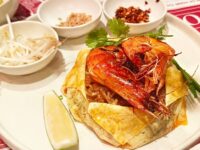


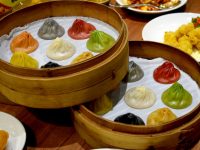
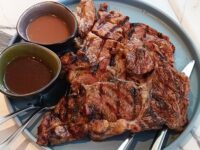



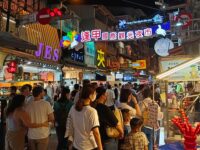


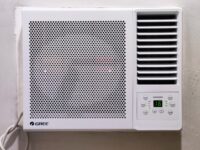

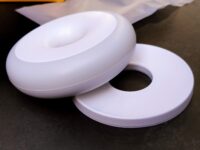
9 responses to “Giant List of How to Prepare for Your Trip Abroad (Vacation)”
Wow giant list nga itey! And a helpful one! Bakasyon ka ulet? Sarap!
Thanks! Tagal na natin di nagkita! Yes, vacation time. See you when I get back! 😀
love this! the power bar is a great idea, did have problems with the power bar non universal I think.
wonderful list, perfect for jet setter and jet settings 😀
If you’re traveling to HK, I highly suggest buying an Octopus card. You may use up any credits left instead of refunding the Octopus card. Last time, I was able to purchase a meal at the HK airport using whatever’s left in the card. Just my thoughts 😉
Hi Dianne, thanks for that tip!
hi. love your blog as i find it very useful/informative :). Anyways, just a few questions about bringing food from HK (roasted pigeons, fruits, etc). In the airport, do you declare this or not anymore? Sometimes i fear that if I bring home food and not declare it they would notice or be randomly checked that’s why i don’t bring them na lang… sobrang gusto ko pa naman hahhaha. Also, can you recommend a good restaurant/store where i can buy roasted pigeons, dried scallops, etc? thanks!
Hi Peachy ? I don’t declare them. Never have. Hand carry naman mga roast goose and pigeons and it’s common to bring those home. For dried scallops, sausages, mushrooms, etc, I just pack them in my checked luggage, properly wrapped so they don’t stink up my clothes (use big ziploc bags).
My fave roast goose is from Yung Kee in Central, but Kam’s also makes good roast goose (Wan Chai). If you like century egg, make sure to try their century eggs (both of them are good).
For less expensive roast goose, try Yat Lok but it’s out in Taipo in New Territories, only go there if you plan to explore because it’s faaar. There’s a Central branch but mas mahal.
For cheaper roast duck, cha siu, there’s a palengke market in Mongkok, somewhere behind Langham Place near Argyle St. Just follow the roast food stalls until you reach the market. Walk around and you’ll see more shops and stalls. There are shops selling roast meats, duck, pigeon etc. Choose the stalls that look the most sanitary, with sealed packs etc.
Mushrooms and scallops can be bought anywhere in HK, but avoid Nathan Road, usually more expensive. Even has Wellcome has them (big branch behind Sogo in Causeway Bay).
You can also explore the wet market in Central.
If you go farther away from the main areas like go to more residential areas, things are generally cheaper. But just consider if the savings are worth the additional transpo expense.
Hope that helps ?
Hi Karen,
Recently, a friend of mine took home several roast goose, pagdating sa Naia, ipinagbawal, nasayang talaga…bawal na ba magpasok ng roast goose (cooked na) and other food stuff in? Many thanks for your many wonderful advice =)
Hi irenencarch,
We just took a whole roast goose home from HK two weeks ago. Didn’t encounter any problems.
What I do is that I always bring extra plastic bags / ziploc bags, tape, scissors. The tape & scissors are for check-in luggage, they cannot be brought as handcarry.
When you buy the roast goose, request that it be packed for airplane travel. The popular roast goose shops are used to it and are familiar with how to do it. As far as I know, they don’t charge extra for packing it this way (just plastic), but they usually have another service called “gift box” which they will charge you extra for. There’s no need to get the gift box unless you want the goose to look presentable.
Okay, so the shops will pack the roast goose for you in plastic. I highly suggest getting the roast goose whole, do not have it chopped. It’s better to pack one whole piece of goose rather than chopped up pieces. Buy the roast goose as close to fly out as you can, same day if possible. I usually get the goose one day before flight back. When you get back to the hotel, refrigerate the roast goose. You may have to take out all the minibar drinks in the hotel ref and then just put them back in when you check out.
When packing to leave the hotel, get the refrigerated roast goose, check if it’s leaking any oil or something, pack it in extra plastic and seal with tape if needed. PUT THIS IN A CARRY ON BAG. Just put it inside a bag with your other carry on stuff. Again, be mindful, do not bring scissors or other banned items in your carry on.
I don’t think there is a law against bringing roast goose back to the Philippines. People have been doing that for decades! But, just avoid making the roast goose “mainit sa mata” by putting it inside a bag and not making it obvious. Roast goose is expensive, P4,000-P5,000 for a whole goose on average. Syempre mainit sa mata nung nag “confiscate”, nakalibre sya ng pasalubong sa pamilya nya.
I did a quick google search, and people have been hand carrying roast goose back to the Philippines since the 80s! I suggest using the small size luggage with wheels for hand carry – the roast goose is heavy so having wheels will help 🙂